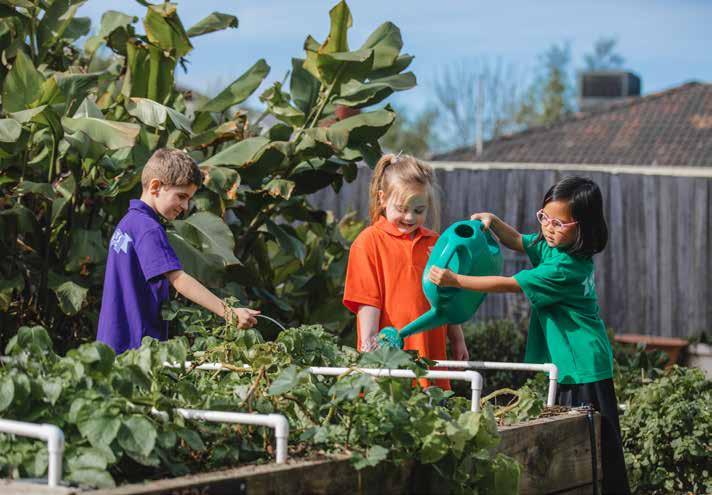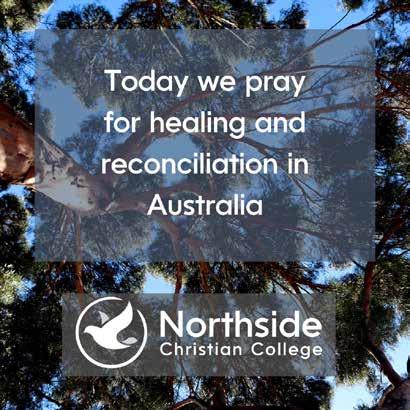
7 minute read
Child Safe Standard 1
Child Safe Standard 1 – Organisations establish a culturally safe environment in which the diverse and unique identities and experiences of Aboriginal children and young people are respected and valued.
In complying with Child Safe Standard 1, an organisation must, at a minimum, ensure:
1.1 A child’s ability to express their culture and enjoy their cultural rights is encouraged and actively supported.
1.2 Strategies are embedded within the organisation which equip all members to acknowledge and appreciate the strengths of Aboriginal culture and understand its importance to the wellbeing and safety of Aboriginal children and young people.
1.3 Measures are adopted by the organisation to ensure racism within the organisation is identified, confronted and not tolerated. Any instances of racism are addressed with appropriate consequences.
1.4 The organisation actively supports and facilitates participation and inclusion within it by Aboriginal children, young people and their families.
1.5 All of the organisation’s policies, procedures, systems and processes together create a culturally safe and inclusive environment and meet the needs of Aboriginal children, young people and their families.
Source
Commission for Children and Young People. (2021a, July 1). New Child Safe Standards start in Victoria on 1 July 2022 to better protect children. https://ccyp.vic.gov.au/news/new-child-safe-standards-start-in-victoria-on-1-july-2022to-better-protect-children/
Culturally Safe Environments
5.1 Schools and school boarding premises must establish culturally safe environments in which the diverse and unique identities and experiences of Aboriginal children, young people and students are respected and valued.
5.2 In complying with clause 5.1, the school governing authority or school boarding premises governing authority must, at a minimum, ensure:
a. A child or student’s ability to express their culture and enjoy their cultural rights is encouraged and actively supported. b. Strategies are embedded within the school or school boarding premises which equip school staff or school boarding premises staff, students, volunteers and the school community or school boarding premises community to acknowledge and appreciate the strengths of Aboriginal culture and understand its importance to the wellbeing and safety of Aboriginal children and students. c. Measures are adopted by the school or school boarding premises to ensure racism is identified, confronted and not tolerated, and any instances of racism within the school environment or school boarding premises environment are addressed with appropriate consequences. d. The school or school boarding premises actively supports and facilitates participation and inclusion by Aboriginal children and students and their families. e. All of the policies, procedures, systems and processes of the school or provider of school boarding services, taken together, create a culturally safe and inclusive environment and meet the needs of Aboriginal children and students and their families. 5.3 The school governing authority or school boarding premises governing authority must develop and endorse a policy or statement that details the strategies and actions the school or school boarding premises will take to implement clauses 5.1 and 5.2.
Explanatory notes:
1. The term ‘Aboriginal’ in this Order includes Aboriginal and Torres Strait Islander peoples. It is important to be respectful of how individual children, students, their families and community refer to themselves, and use appropriate language when referring to individuals or communities. 2. This clause applies even if there are no children or students at a school or school boarding premises that identify as Aboriginal. 3. A statement can take the form of any written record, for example, a documented plan, posted on a website or online communication platform or a statement incorporated into an existing policy or other document.
The Review of Victoria’s Child Safe Standards recommended cultural safety for Aboriginal children and young people be a stand-alone principle. This is reflected in the new Child Safe Standard 1.
While cultural awareness and sensitivity are important foundations, by themselves they do not necessarily ensure Aboriginal children and young people experience cultural safety within organisations. The new Child Safe Standard 1 requires organisations to create a culturally safe environment for Aboriginal children and young people. Organisations must meet this requirement regardless of whether or not they know that there are Aboriginal children and young people currently using their services or facilities. This includes measures for identifying and responding to instances of racism.
This new Child Safe Standard 1 means that most organisations will need to improve their current approach to creating a safe environment for Aboriginal children and young people and their families. Implementing this Standard will require ongoing effort, not just a once-off change.
Achieving a culturally safe organisation involves:
•Supporting Aboriginal children and young people to express their culture. • Ensuring all staff and volunteers receive relevant cultural training so they have an understanding of
Aboriginal culture, and an appreciation for culturally sensitive issues. • Identifying and addressing incidences of racism with the involvement of Aboriginal children and young people, and their families. • Ensuring the organisation’s policies, procedures, systems, processes and measures create a culturally safe and inclusive environment for Aboriginal children and young people.
Source
Commission for Children and Young People. (2021b, July 1, p. 2). What’s changing?: Compare current and new Child Safe Standards. https://ccyp.vic.gov.au/assets/resources/New-Standards/Whats-changing-comparison-of-currentand-new-Child-Safe-Standards.pdf
College Strategies
Northside Christian College has commenced implementing a range of strategies to assist in creating a culturally safe environment for Aboriginal children and their families. Some of the strategies already in place at the College include: • Aboriginal and Torres Strait Islander flags flying daily at the College. • The Year 9 Cultural Challenge has provided an opportunity for staff and students to work closely with an Indigenous community in Esperance, Western Australia over a number of years supporting students to develop a greater awareness and respect for Aboriginal and Torres Strait Islander people and their culture. • National Reconciliation Week was celebrated at Northside in 2022. For more information, please refer to: https://www.facebook.com/NorthsideChristianCollegeVictoria/videos/during-todays-college-assembly-werecognised-those-students-who-have-displayed-t/682094279488429 • National Sorry Day is recognised at Northside Christian College. • The College has started events with an Acknowledgement of Country during recent years, including the College’s Dedication Service and the National Reconciliation Week assembly. • Uncle Ian Hunter, Traditional Wurundjeri Elder, has been invited to speak at College Dedication Services. • Harmony Day is celebrated annually at Northside Christian College. • The College has developed a Cultural Safety Policy (Policy No. 74).
The College has developed a Cultural Safety Policy (Policy No. 74) during 2022. The policy outlines the College’s commitment to establishing and maintaining culturally safe environments in which the diverse and unique identities and experiences of all students and members of the College community are respected and valued, including Aboriginal children, young people and students.
The College acknowledges that this policy applies even if there may not be any Aboriginal or Torres Strait Islander children at the College.
Colossians 1:16-17
The College has taken action to implement Foundation Steps as suggested by Rose, Fitzgerald, and Elleray (2022), which are outlined in the Action Items below.
Action Items
Action: Develop a public commitment to cultural safety of Aboriginal and Torres Strait Islander children.
Action: Policies and procedures describe commitment to respecting and valuing Aboriginal and Torres Strait Islander children.
Action: Commitment to respecting and valuing Aboriginal and Torres Strait Islander children needs to be reflected in the College’s Child Safety Code of Conduct and position descriptions
Action: Implement strategies to ensure racism is identified and addressed at Northside. Ensure there is specific reference to racism in the Behaviour Management Policy.
Action: Develop a plan of action setting out further steps to be taken by 1st July 2023 and gaps to be addressed. Action Plan Key: In Place Partially in Place Not in Place

Further Steps
•Policies and procedures provide detailed guidance for staff, volunteers and leaders. • Children receive information and encouragement about cultural rights. • Culturally safe opportunities for Aboriginal and Torres Strait Islander families to participate. • Community receives information on cultural rights, strengths of Aboriginal and Torres Strait Islander culture and connection between cultural safety and cultural safety. • Strategies to prevent racism and appreciate strengths of Aboriginal and Torres Strait Islander culture.
Source:
Rose, S., Fitzgerald, P., & Elleray, M. (2022, May). Victoria’s new Child Safe Standards – what they mean in practice [Webinar]. Moores Legal.
KEEPING OUR KIDS SAFE:
CULTURAL SAFETY AND THE NATIONAL PRINCIPLES FOR CHILD SAFE ORGANISATIONS
National Office for Child Safety The College is exploring the Keeping Our Kids Safe resource to explore how we can take foundation steps towards building a culturally safe environment for Aboriginal children and young people. https://www.snaicc.org.au/wp-content/uploads/2021/06/SNAICC-VACCA-OCSChildSafeReport-LR-with-alt-tags-May2021.pdf

Accessible Resources on College Website
Northside Christian College recognsies that we have students and families from a diverse range of language backgrounds. The College website has been set-up to ensure that most of our families can access the website in a language that they can easily understand.








